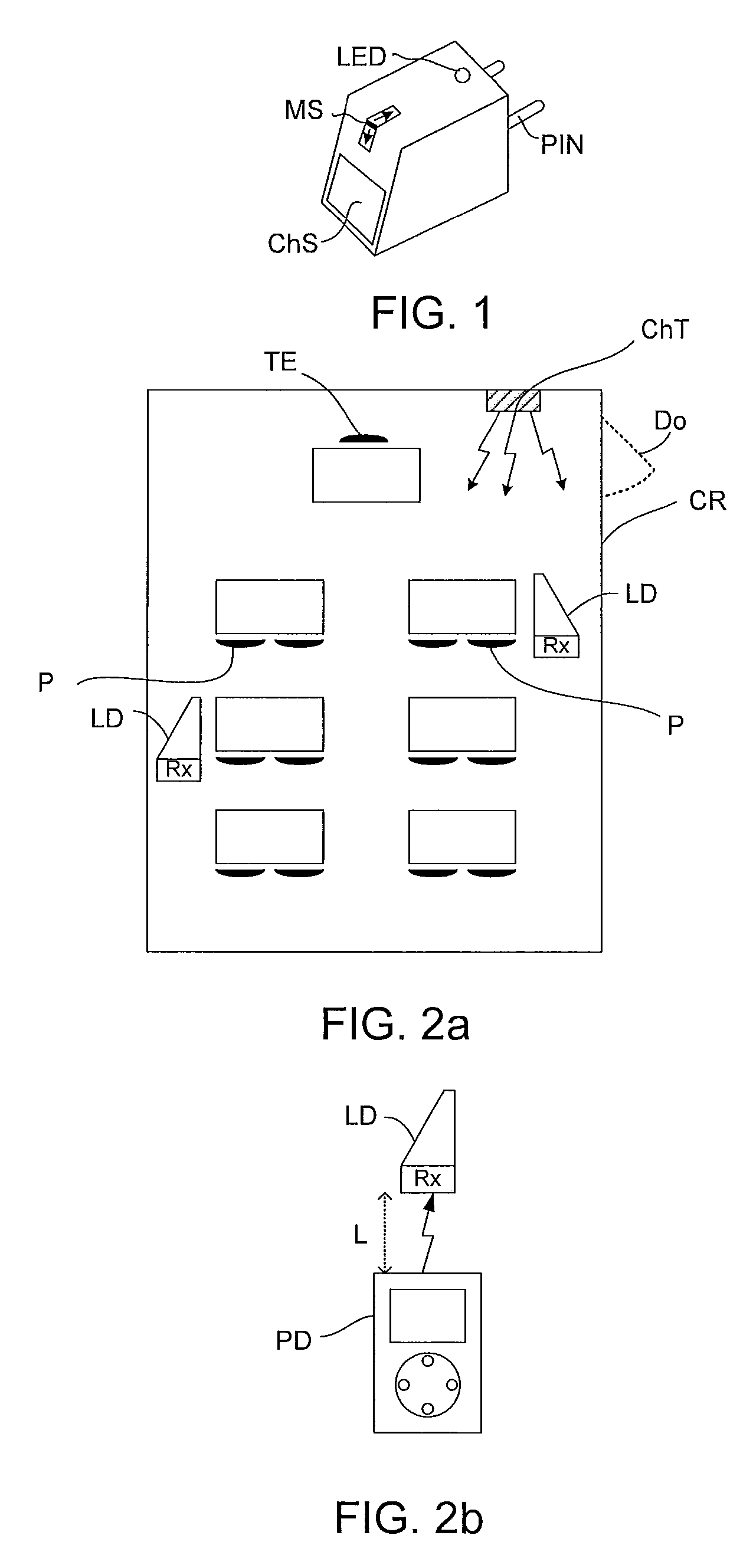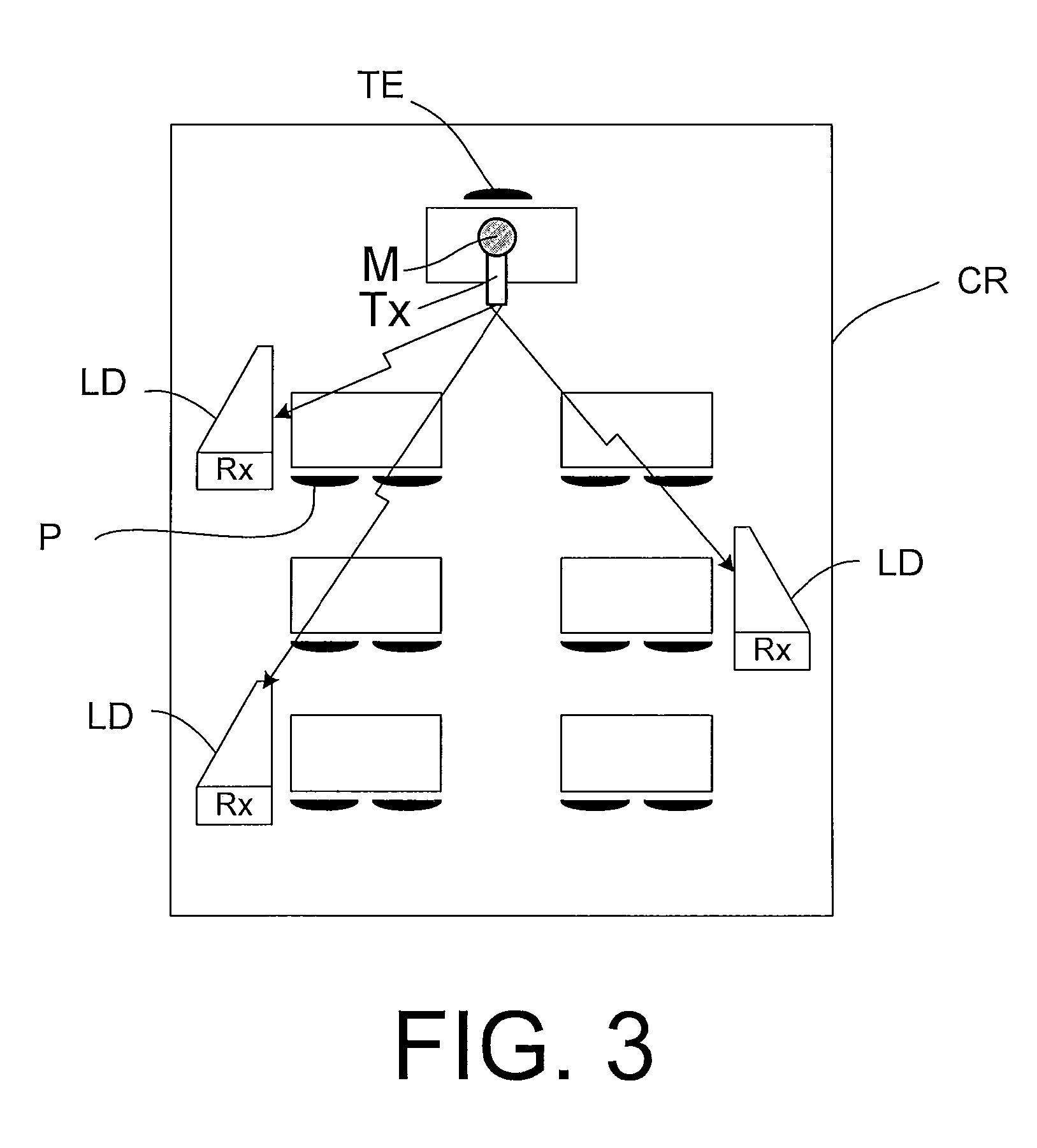Method of identifying a wireless communication channel in a sound system
a wireless communication and sound system technology, applied in the field of sound systems, can solve the problem of time-consuming in finding the appropriate channel, and achieve the effect of speeding up the search
- Summary
- Abstract
- Description
- Claims
- Application Information
AI Technical Summary
Benefits of technology
Problems solved by technology
Method used
Image
Examples
Embodiment Construction
[0123]FIG. 1 shows a sketch of a prior art wireless FM receiver device, here similar to the Oticon R2, comprising push button control of the communication channel. The device in FIG. 1 represents in the framework of the present application a radio part. In practice, the part is often also termed an ‘FM-shoe’ or an ‘FM-pin’, referring to the fact that the device comprises a wireless receiver adapted for reception of an FM-signal and that it is electrically connectable to another hearing aid part via an electric connector (cf. PIN in FIG. 1), the other part typically comprising the normal functions of a hearing aid (input and output transducers and signal processing, etc.). The device in FIG. 1 comprises a three-position switch (MS) for selecting an appropriate mode of the device, a push button (ChS) for selecting another channel, and a light indicator (LED).
[0124]FIG. 2 shows a prior art scheme for communication channel control in listening devices using a wall-mounted transmitter (F...
PUM
 Login to View More
Login to View More Abstract
Description
Claims
Application Information
 Login to View More
Login to View More - R&D
- Intellectual Property
- Life Sciences
- Materials
- Tech Scout
- Unparalleled Data Quality
- Higher Quality Content
- 60% Fewer Hallucinations
Browse by: Latest US Patents, China's latest patents, Technical Efficacy Thesaurus, Application Domain, Technology Topic, Popular Technical Reports.
© 2025 PatSnap. All rights reserved.Legal|Privacy policy|Modern Slavery Act Transparency Statement|Sitemap|About US| Contact US: help@patsnap.com



